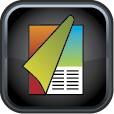
 Brochure Design
Brochure Design
A recent study on the effectiveness of brochures found that eight out of ten people learnt more about a product or service through brochures. Surprisingly, millennials are more interested in printed marketing material than older generations. Little wonder, everyone from SMEs to retail chains to Amazon still invests in brochures. With Lime’s brochure design and printing services, your business can enjoy increased conversions that will leave your competitors green.
What is the difference between a brochure, a flyer, and a catalogue?
Brochures are marketing materials in fold-out or booklet form, containing information about a business, product or service. Flyers take the more compact form of handbills, which accommodate less content. Catalogues are books with information on dozens or hundreds of products.
Brochures and catalogues are marketing tools well-suited for prospects who are already interested in a particular product or business, intended to inform and persuade potential customers. Flyers are smaller and cost less, making them better suited to conveying basic information, even to “cold” prospects.
If you’re interested in flyers or catalogues, please explore Lime’s specialised services for flyer and catalogue design.
Are brochures still relevant?
Despite the popularity of digital media, here are a few reasons why brochures still remain a highly effective marketing tool:
- A study of 2,400 consumers interested in a purchase found that 98% of them read through a marketing brochure related to their purchase.
- The popularity of printed marketing collateral has been steadily increasing since 2015.
- A recent Harvard Business Review experiment found that printed brochures and catalogues produced as much as 125% lift in enquiries and 49% lift in sales.
- The effectiveness of brochures sees their continued use by both online and offline businesses across diverse industries, including Ikea, Nordstrom, Restoration Hardware, Patagonia, Amazon, and many others.
- While many other forms of advertising are confined to a single medium, brochures are not. For example, the only way people will see a television commercial is to switch on the telly to the right channel at the right time. Brochures, on the other hand, can be distributed in stores, through partner outlets, with newspapers, at malls or exhibition stalls, via snail mail, and so on.
What makes for a great brochure design?
Not all brochures are created equal. Poorly designed brochures can produce little to no benefits. Here are a few of the important characteristics of the effective brochures you get when you choose Lime’s custom brochure design and printing service:
An understanding of the target customer
Recognising the needs and expectations of the customer is essential to crafting a persuasive brochure. For example, a laptop brand may pitch a common model to both college students, and to large businesses for their travelling sales workforce. Although the product is the same, a well-made brochure would be crafted accordingly, depending on who it’s talking to and what they want.
Sells the benefits, not just the features
While a feature is something that a product has, a benefit is the outcome or result of that feature for the consumer. In other words, it’s what the consumer feels or gains as a result of the feature (sometimes referred to by marketers as the “benefit of the benefit”). For example, saying that a music player offers “1 GB of storage”, tells the user about the feature. Saying that the player lets them have “1,000 songs in their pocket”, sells them the benefit.
Consumers don’t necessarily understand how the features of your product / service make life better for them, so a good brochure always sells them the benefit with persuasive copy as well as compelling images and graphics.
Readability and visual balance
While the list of things one can say to a consumer is practically infinite, the consumer’s attention span is very, very finite. This means that cramming too many things into a page simply divides the reader’s attention over every element, and no single message gets registered or makes an impression.
Well-designed brochures avoid this problem by choosing carefully what to say, with design that calls readers’ attention to the most important points, and layouts that invite them to read rather than switch off.
Let consumers see, touch and feel
Research shows that people understand and process information in different ways: some are visual learners, while others are kinesthetic, preferring a more hands-on and physical or feel-based approach. A well-designed brochure delivers on both aspects, with great visuals (including charts, infographics, and illustrations) as well as tactile experiences through different textures and print techniques.
Memorable and creative presentation
From a tax consulting firm that used brochures shaped like calculators, and a fire equipment provider with fire-extinguisher-shaped brochures, to an eye clinic brochure where each page was split into before-and-after windows, with a slider that helped readers see the difference between corrected and uncorrected vision — the potential for creativity with brochures is limitless.
Thanks to techniques such as custom die-cut shapes and special printing methods (like embossing, foil stamping, spot UV, and varnishing, to name a few), creative brochures impress customers and set you a cut above the competition. What’s more, they have the “stickiness” factor that helps customers remember your business for years to come.
Powerful calls to action
Even the most attractive of brochures is of little value if it doesn’t help in getting readers to take the next step – like making a call, an enquiry, or a purchase. Effective brochures always invite the reader to take action.